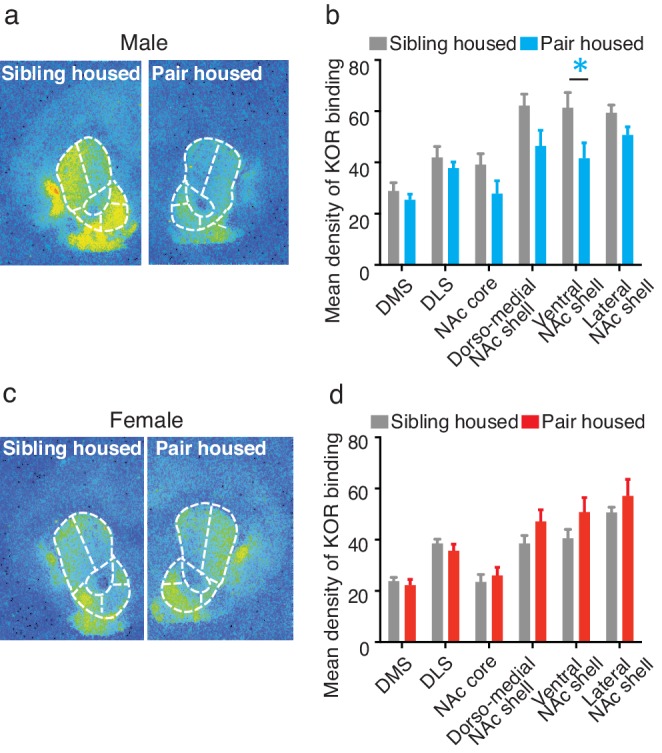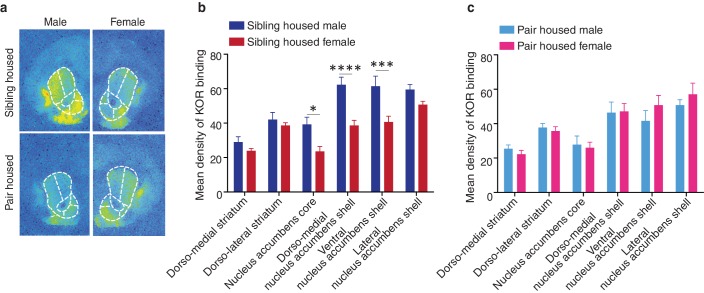(
a) Representative autoradiographs from sibling (top) and pair housed (bottom) male (left) and female (right) prairie voles. (
b) Prior to pair bonding, sibling housed male and female prairie voles show a sex difference in KOR binding density within the striatum (two-way ANOVA,
F(1,114) = 38.14, p=0.0001). Specifically, compared to sibling housed females (i.e., non-paired), sibling housed males have higher levels of KOR binding density within ventral regions of the striatum. Bonferroni’s post hoc test revealed that within the striatum, sibling housed males had significantly higher levels of KOR binding density within the NAc core (p=0.02), the dorso-medial region of the NAc shell (p=0.0001), and the ventral NAc shell (p=0.005). (
c) Interestingly, following the establishment of a pair bond, these sex differences no longer exist (two-way ANOVA,
F(1,114) = 0.36, p=0.55). These results are consistent with findings presented in
Figure 3A, which demonstrate that pair bonding decreases KOR binding density within the ventral striatum of males while leaving the KOR binding density in females unaltered. Together, these data suggest that pair bonding in males lowers KOR binding density to the levels of females regardless of the female’s social housing condition. Summary data are presented as mean ± SEM. *p<0.05, **p<0.005, ***p<0.0005.


